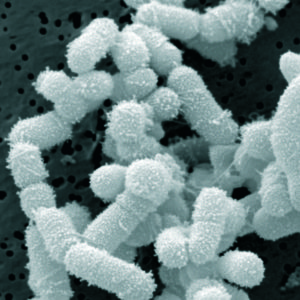Interesting research using probiotics (beneficial bacteria) to treat a nickel allergy. What other allergies could be treated with probiotics? From the American Microbiome Institute:
Treating severe nickel allergies with probiotics
Systematic nickel allergy syndrome (SNAS) is a severe reaction to nickel, a metal that is found in nature and most human food sources. An allergic reaction to nickel can manifest cutaneously, causing inflammation and irritation of the skin, or it can be gastrointestinal, causing diarrhea. Studies in which balanced diets are used as a way of reintroducing nickel to SNAS patients have been conducted to find possible treatments of this allergy; however no cure has been found. Research by a group in Italy was published last month in the Journal of Applied Microbiology that examined the use of probiotics such as Lactobacillus reuteri to treat SNAS patients.
A double blind study was performed using twenty-two adult women who had both systematic and cutaneous reactions to nickel. A control group received a placebo, while an experimental group received the L. reuteri probiotic. Fecal sampling and clinical evaluations were performed at the start of the study, before any pills were taken, as well as after two weeks of supplementation and two weeks after the end of the trial. Throughout the entire evaluation period the patients followed a low-nickel diet.
Both groups prior to experimentation had low diversity of lactic acid bacteria (LAB) communities in their gut. After the trial, they found that the control group had stable LAB communities while the experimental group resulted in greater diversity of LAB than prior to the study. They found that only the experimental group showed the presence of L. reuteri meaning that the bacteria in the probiotic had successfully colonized and survived in the gut, an essential feature if a probiotic is to be used in a clinical setting.
They also found a significant improvement in cutaneous symptoms after two weeks in both the group being given the probiotic with a low-nickel diet, as well as the strictly low-nickel diet patient group, however the improvement was more pronounced in the group getting the probiotic. Only patients receiving the supplementary L. reuteri showed a significant reduction in gastrointestinal symptoms. Eating a diet low in nickel will cause less averse reactions than an uncontrolled diet; however, this study strongly suggests that probiotics can significantly decrease the severity of allergy symptoms in SNAS patients. The study also suggests that a combination of diet and probiotics could increase bacteria’s ability to colonize in the intestines.

 Much discussion about the link between gut bacteria and liver cancer, as well as the link between inflammation and cancer. Gut microbiome imbalances can cause health harms.
Much discussion about the link between gut bacteria and liver cancer, as well as the link between inflammation and cancer. Gut microbiome imbalances can cause health harms. Are probiotic bacteria the reason?
Are probiotic bacteria the reason?